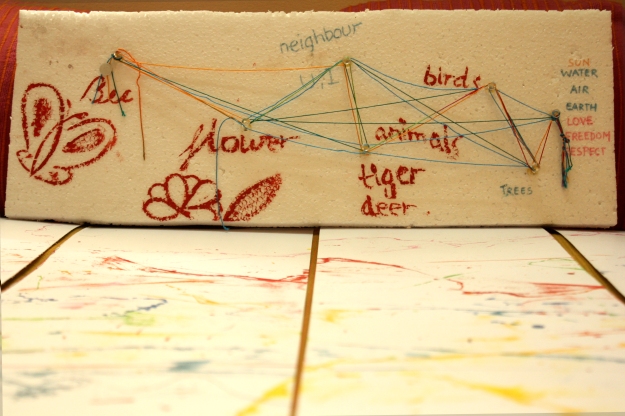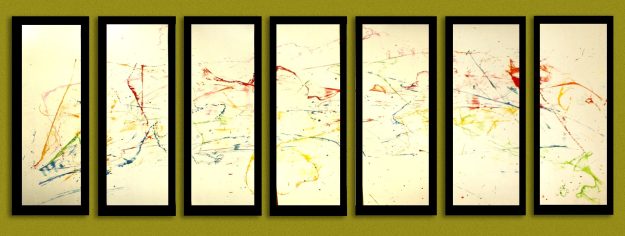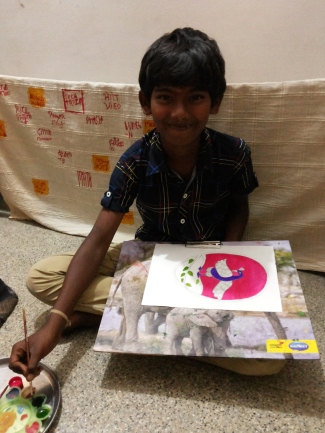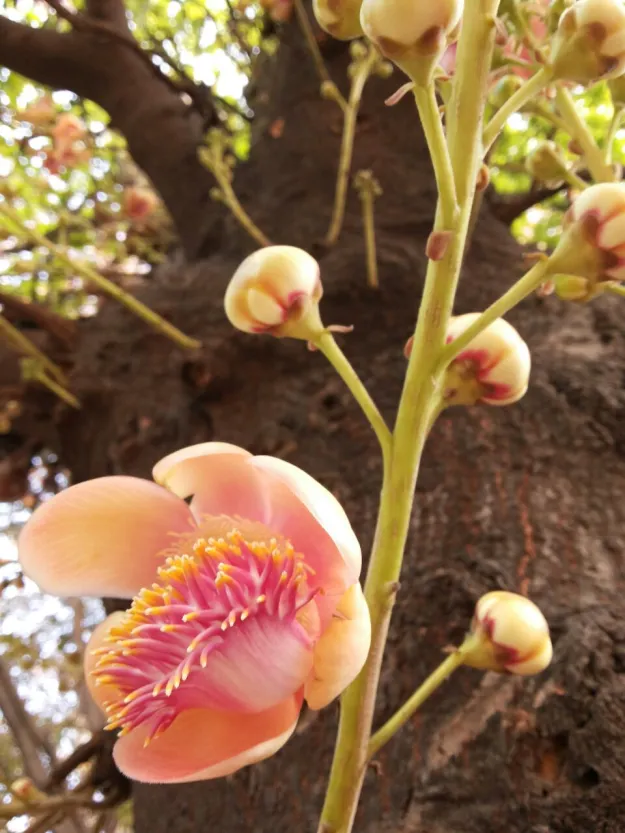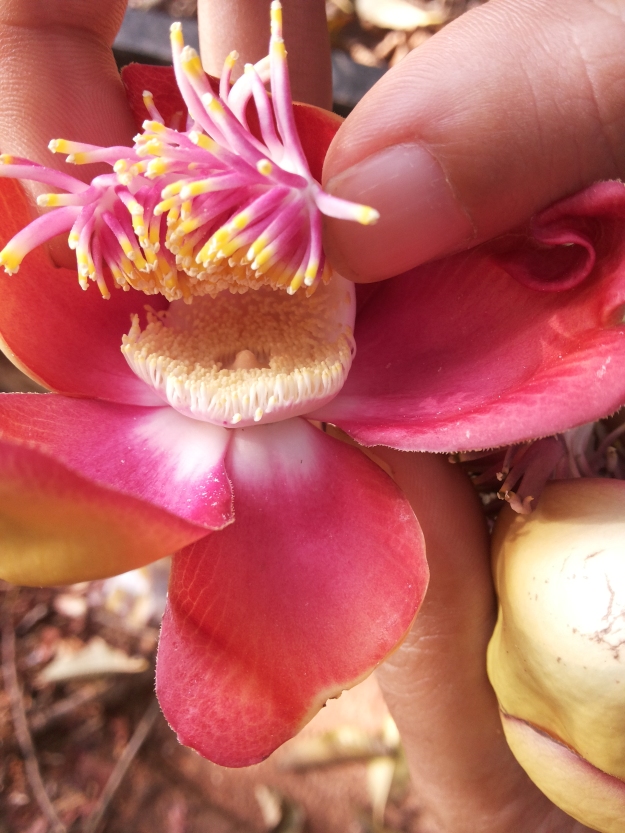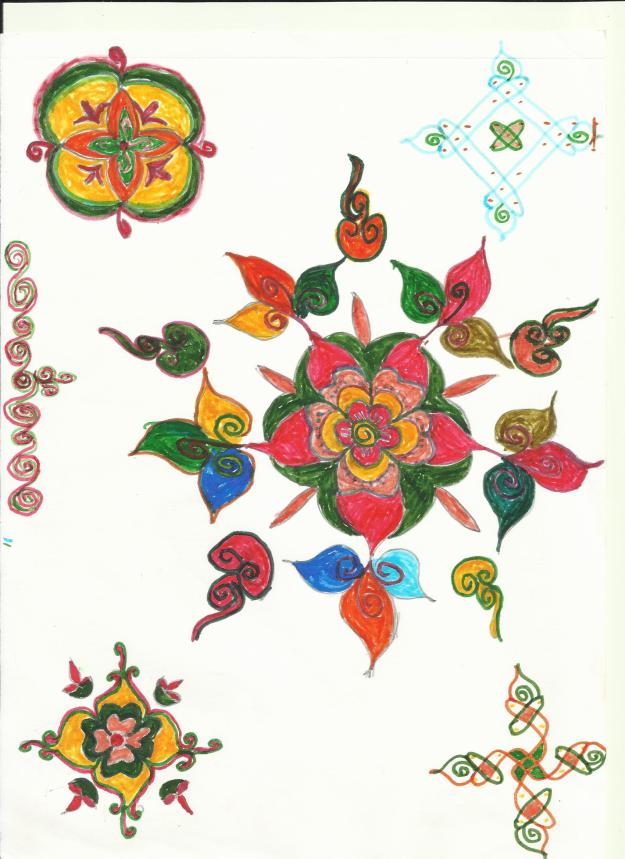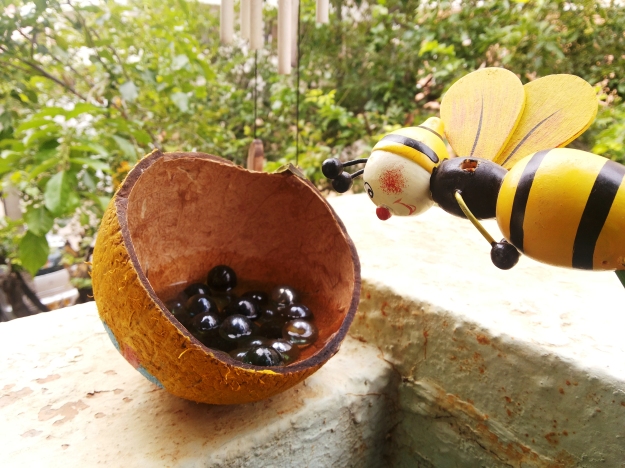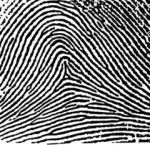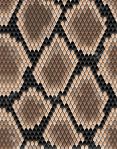(The photographs are best viewed in full screen mode. )
We are essentially a network of connections. And nature has used its brush strokes to create stunning patterns which are always there to remind us of these connections – connections waiting to be discovered by each of us.
We started with a question – can you read leaves ? The reply was a ‘No’ from the kids. There began our explorations , 5 hours every week.
‘Color is visual fragrance.’- Sadhguru
To observe anything deeply is meditation to me. And I find colors in nature to be beautiful creations to observe. One of the first activities was to observe our surroundings in colors – one color one day. We then discussed the same color , and where it is found in nature. We studied and experimented with colors, what happens when you mix 2 colors. We used our fingers, sometimes brushes, and sometimes threads. It is quite incredible how 5 colors create most of the colors around us. We continue to do this activity once every week.

yellow brush, pen, a house, no parking sign, 3rd Cross Board, Yellow cutting board 🙂

experiments with colors

colors in nature
Patterns and shapes
One of their assignments was also to draw using only 3 shapes – triangle, circle , and a square. These kids came up with such brilliant things !
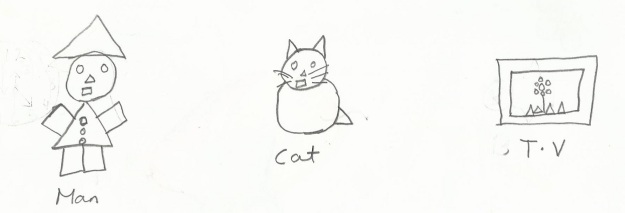

Come observe
I gifted each of the students a personal diary, for them to pen down their thoughts, anything interesting they might come across, experiences, poems, quick sketches etc.
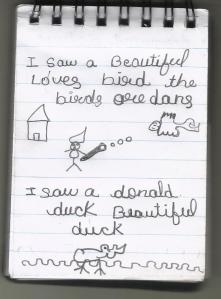
🙂
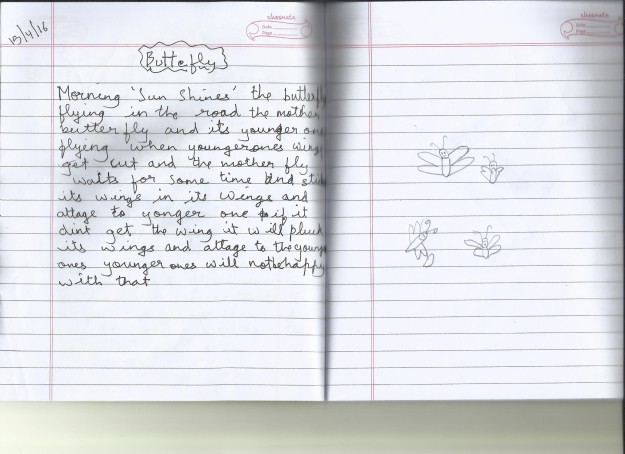
This is what Messi learnt from his aunt the day he picked up a broken butterfly wing – how a mother butterfly attends to the broken wing of her young one – she sticks it back , or tears off her own and gives it away. The lesson was to leave the broken wing where it is, for the mother butterfly might be searching for it.
Once upon a time….
I find stories a great way to explore connections. We started our story telling sessions with a question to the children – what is your story? One of the children said, aunty , I don’t have one. And so it started …what is a story ?
This is a beautiful game I picked up from Prague, I absolutely love the design , and the kids LOVE playing this – the same kids who did not have a story to tell , excitedly jumping all over , impatient for their turn to tell a story.
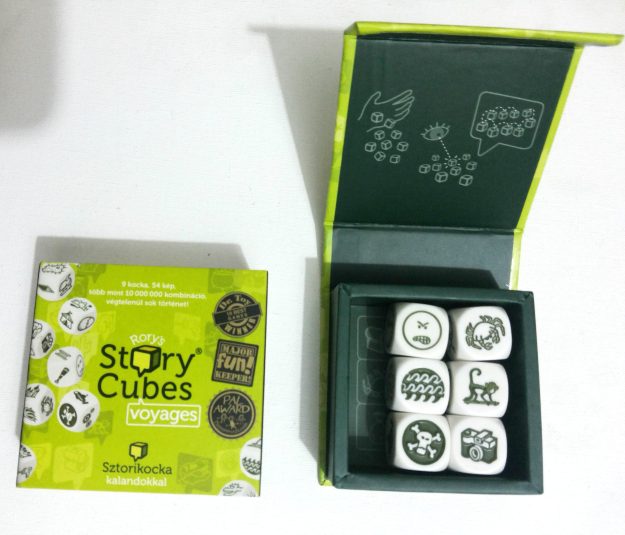
The idea is to create a story using the images on the dice ( you can throw all six , or lesser , depending on how comfortable you are with creating a story)
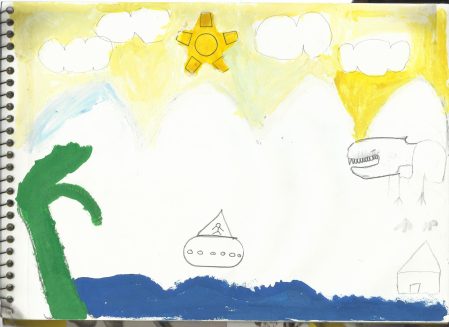
Story- telling through painting – Each kid was given 8 words to paint a story with . ( In progress. )
We explored different ways of story – telling in books as well as movies .
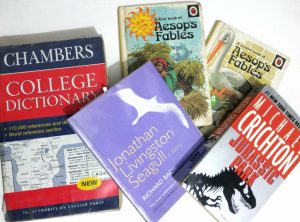
The kids particularly enjoyed the Fleischer animations.
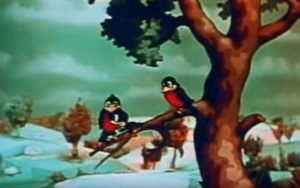
In The song of the birds (https://www.youtube.com/watch?v=8FDdIMti2U0), we explored how music conveys emotions. We had a very good discussion about whether the birds should be afraid of flying . This discussion was particularly important , because just the day before, I had handed Richard Bach’s Jonathan Livingston Seagull to one of the kids. After about half an hour, I asked if she was getting bored. She said yes, not to my surprise. Then I asked her to imagine herself as the seagull. Her reply was both disturbing , as well as bolstering – I realised how important it was for them to get rid of their fears – ” No aunty, I don’t want to be a bird. Someone will cut my wings and kill me.” I did not ask her why she was afraid, I already knew why. So instead I asked her ” Aren’t you forgetting something very important ? That if you are a bird, you can fly anywhere. you don’t need money, or a passport, or an airplane ticket. You said you wanted to see the world, you could do that so easily. Wouldn’t you like to dream about that ?” She nodded a little excitedly, a little apprehensively.
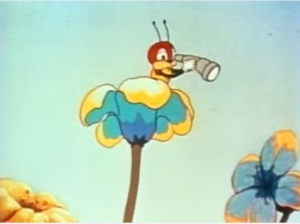
In the Ants in the Plants ( https://www.youtube.com/watch?v=M3Qyn7apy0I ) , the kids had so much fun observing the tiny details – the corn gun, the way the ants communicated, the ant shops and bakery, the army costume, the snails , the SOS signal, the Emergency Aid, the spices as a weapon …. The kids filled up their diaries that day , filled them with these tiny details that they found so very interesting. We ended the session with a few questions – Do you think you can be happy if you have hurt an innocent bird? The ant-eater’s food is ants. What do you think about it ?Did you see similarities in how the ants and humans function? How were they similar ? Do you think it is possible that the ants have a world like this? Can you understand the language Ants speak? Could it be that they have a language for communication, just like we do ?
Reading patterns to understand connections
Coming back to the question, can you read leaves ?
We first tried to observe various leaves – observe them by looking, touching, drawing, taking impressions.
We discussed what these lines in the leaves were, and drew analogies from the veins in our body. We discussed how the heart pumps blood and transports it by understanding how the water reaches the taps in our house – through plumbing pipes , a pump , and a tank. We observed our own hands, and the patterns there.
In the next class, I asked the kids to identify some patterns –
The idea is to help the kids make their own connections with nature. The next time Messi plays football, somewhere he will be able to (hopefully) link it to other things around him. The next time T-Rex imagines a dinosaur, he might imagine the shape of the leaf its footprint resembled ( refer the last photograph)
We have now started studying bees and their connections with us .
How are bees connected with us ? “We eat their honey” said the kids. And ? how else?
https://www.youtube.com/watch?v=vll_2xH_SQY – Giant honey bees – Life in the Undergrowth – BBC Attenborough , a beautiful documentary to get the kids interested. We discussed the pulley system that helped David get to the bee hive , what pheromones were. We discussed how the bees make the honey in their mouths. One of the kids asked me if I knew how a cow takes the grass from the ground. I said – with its tongue. He said ‘ Correct aunty.’ , and then told us how exactly it curls its tongue and grabs the grass.
This was followed by a video – The Death Of Bees Explained – Parasites, Poison and Humans , https://www.youtube.com/watch?v=GqA42M4RtxE . In the part where the bees are shown falling upturned, one of the kids yelled ” Aunty stop ! I saw the exact same thing a few days back. I was going to play and there were a lot of bees falling exactly like this, I saw them lying dead on the floor. A man had sprayed insecticide on the bee hive. Then an old uncle told him – what was the point of poisoning and killing these bees ? You have killed them , and poisoned the very honey you were after.
I had thought that the kids might not have the patience or the interest to even sit through the video, but they truly surprised me with their involvement – constantly asking questions, rewinding the video to understand something, pausing for a discussion. It was also wonderful to see that the topic lingered in their minds for a while, when I saw a kid drew a bee-hive for an assignment on spring 🙂
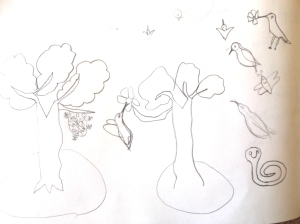
The whole of next month, we will be exploring the world of our wonderful friends through various forms – making bee baths, puppet shows, paintings, writing poems and stories.
These last 2 weeks have been extremely rewarding. Sometimes these kids come over randomly just to talk, or read a book , and I will end up learning about something just like that – how the flower that I photographed has a Shivaling at the center, how a pigeon gives very few eggs at a time, how the sand used in construction is full of sea-shells which these kids collected. As I was compiling this post, I realized how much these kids have taught me already, how I have grown as a person, as a partner,as an aspiring artist, as an aspiring teacher. I also hope that these kids have something to take away , a different perspective or a new thought, a new connection.
( Not all the work from the last 2 weeks has been uploaded. Also, ‘Aunty’ here is not to address a family relation, but refers to a a middle-aged or older female. )
